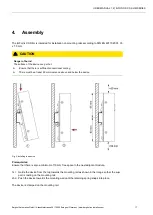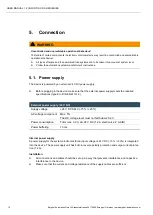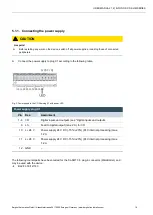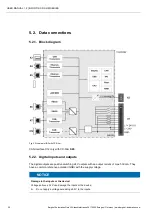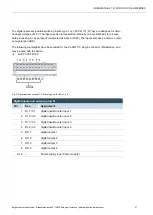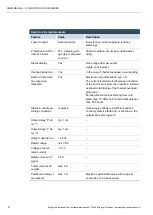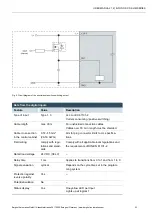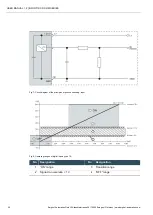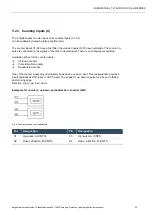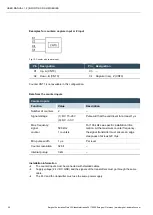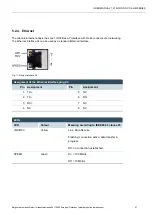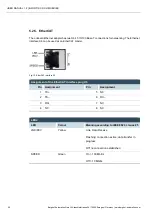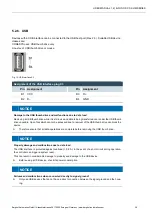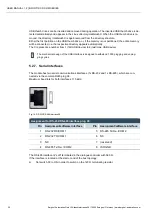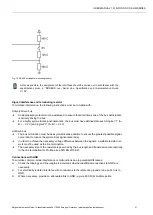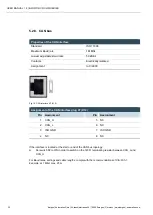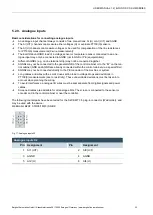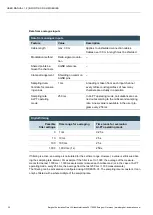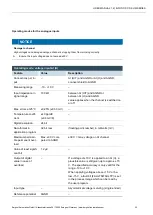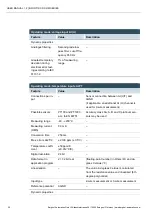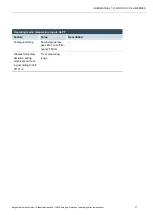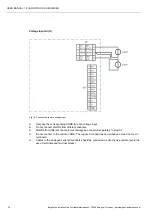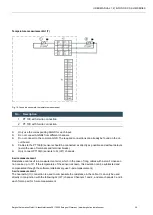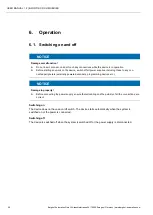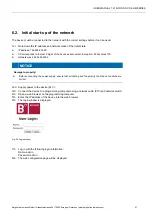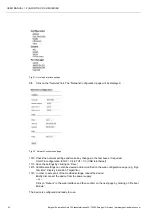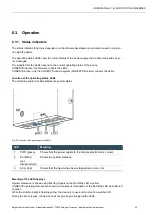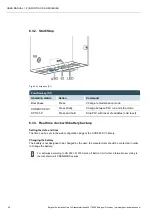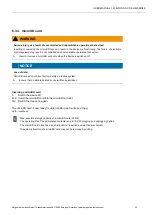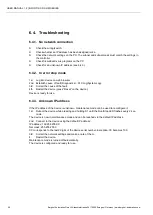
USER MANUAL 1.2 | B-FORTIS CC-SLIM SERIES
Berghof Automation GmbH | Arbachtalstrasse 26 | 72800 Eningen | Germany | www.berghof-automation.com
31
Fig. 15: RS-485 switchable terminating resistor
As far as possible, the assignment of the interfaces should be carried out in accordance with the
specifications given in “MODBUS over Serial Line; Specification and Implementation Guide
V1.02”.
Signal interference and terminating resistor
To minimise interference, the following instructions must be complied with.
Actively driven bus
→
An appropriate protocol must be employed to ensure that at all times one of the bus participants
is actively driving the bus.
→
For a highly symmetrical signal-noise ratio, the bus must have defined statuses for logical “1” (A–
B < – 0.2 V) and logical “0” (A–B > +0.2 V).
Undriven bus
→
The bus termination must be as asymmetrical as possible to ensure the greatest possible signal-
noise ratio (to reduce the symmetrical signal-noise ratio).
→
In order to achieve the necessary voltage difference between the signals, a suitable resistor net-
work must be used as the line termination.
→
The necessary size of the resistors is governed by the bus length and transmission rate (similarly
to the line termination for Profibus, see DIN EN 61158-2).
Connections with GND
To minimise common-mode interference or malfunctions due to potential differences:
Check the topology and line lengths to determine whether additional connections to GND are
necessary.
For electrically isolated interfaces with connections to the reference ground at one point: link to
GND.
Where necessary, provide an attenuated link to GND (e.g. via 200 Ω) at multiple points.

